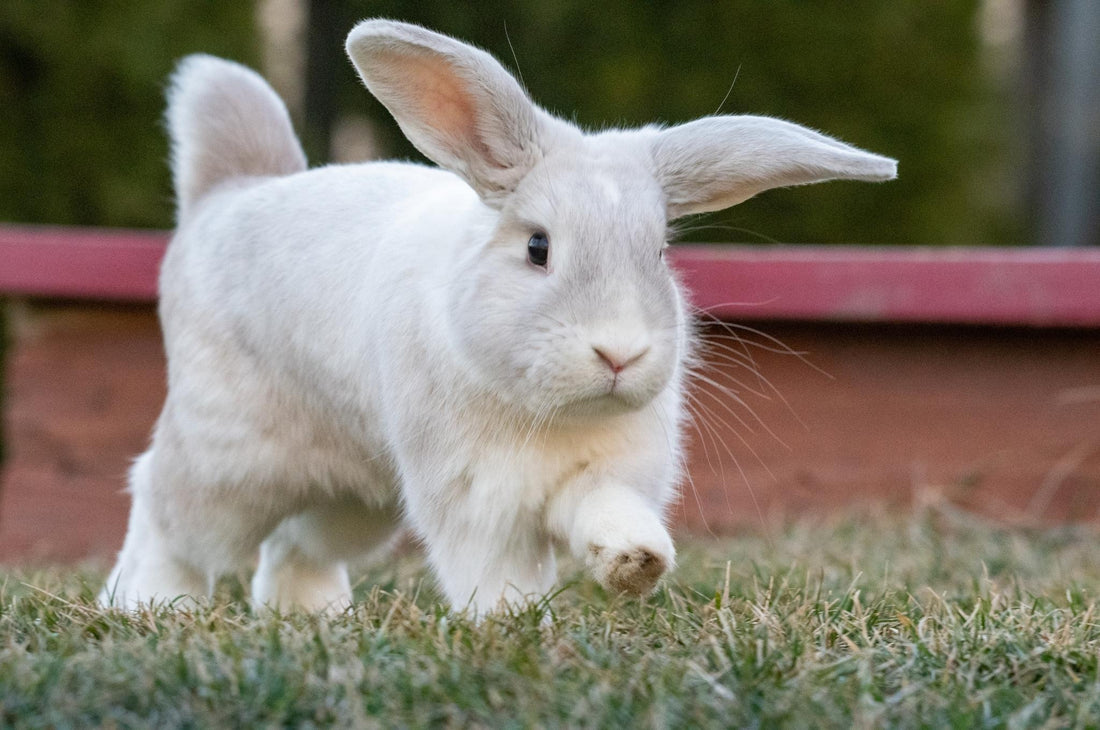
A rabbit is a great pet; it is full of character and cuddles and can be a great way to teach a young person how to nurture and care for another creature.
While it is easy to believe that a rabbit is content to sit in a hutch and watch the world go by, it is not a healthy environment for your rabbit. You need to consider how much exercise rabbits need a day and work to keep it active into your day. Remember, your rabbit will be digging, tunnelling, climbing, and generally hopping over a fair distance to get fresh grass in its natural environment. Mimicking this behaviour in your home will ensure your rabbit is a much happier pet throughout its long life.

How much exercise do rabbits need each day?
For healthy rabbits, plan to allow them four hours of mental and physical exercise each day. Splitting these four hours between the morning and evening is best, as this mimics a rabbit's natural behaviour in the wild.
When giving the rabbit the two hours in the morning and two in the evening, be sure to give them a mix of exercise, as just allowing them to bob about doesn't mentally stimulate them. It is important to get your rabbit thinking as it moves because this will allow your rabbit to thrive.
Equally, your rabbit might need to continue its playtime beyond these hours. Therefore, putting rabbit-friendly toys within a suitably-sized pen or hutch allows your pet to continue engaging and avoid developing bad habits like chewing.
Mimicking healthy rabbit behaviour
There are three behaviours that a rabbit exhibits in the wild that are best to mimic in your domestic pet. So, how do rabbits exercise?
- Rabbits enjoy tunnelling and climbing: cardboard poster tubes are amazing here
- Rabbits enjoy searching hiding places: get some boxes and build your rabbit a den
- Rabbits are best exercised by working for their food: hide food in brown paper and get the rabbit to search for it
Keeping these natural behaviours in mind can help your pet stay healthy in body and mind.

How to help your rabbit tunnel and climb
Find those packaging tubes made of thick cardboard and set up some tunnels for your rabbit to use. Make sure the tubes are wide enough for the size of your rabbit. If your rabbit is free to explore your garden, try burying some tubing under some soil.
Equally, you might want to use an old tree stump. Rabbits love to climb and watch the world from a higher vantage point. Therefore, giving them somewhere natural to gravitate to is a great way to stimulate your pet.
How to use hiding places to exercise your rabbit
Rabbits love to hide and naturally do so out in the fields and woodland where they roam. Therefore, giving them dens to explore made of old cardboard boxes is a great stimulus for your rabbit. Hiding treats within these dens will encourage them to explore.
Equally, you can give your rabbit a low planter filled with earth, so they can burrow, as they would naturally do. Burrowing is great fun for a rabbit and best for you to give them a place to do this than have your garden cultivated by your furry friend.

How to keep your rabbit active using food
In the wild, a rabbit will burn calories and stay fit in its pursuit of food. Nature doesn't provide a natural bounty each day in a hay rack or dish; the rabbit is forced to work for it. Therefore, wrapping portions of food up and placing them around the place can help your rabbit use its natural behaviours to stay active. The more effort it puts into finding its food, the better for the rabbit's general health. Making sure you choose a premium rabbit hay like Newhay Timothy hay is paramount in ensuring your pet is getting the very best food.
Can you put a rabbit in an exercise ball?
Rabbits are not meant to be placed inside exercise balls, and there are no large balls to fit your rabbit; unlike hamsters that run to exercise, your rabbit likes to hop. It is not a suitable toy to help your rabbit use its natural movements and could cause injury to your pet’s back and spine.
You can buy exercise balls for a rabbit, though these are used as a dog would use a ball. In this way, a rabbit exercise ball is one of the best purchases you can make. Buying a ball made of twine is also a great prop to divert natural chewing behaviours to something other than your furniture. Your rabbit can also learn to throw the ball. When the rabbit throws the ball and you retrieve it, you will find this can stimulate them for a good while.
Be aware that rabbits are pretty smart, so the best toys are often those that require some puzzling out. Setting up an obstacle course for your rabbit to navigate in order to get to its food is good fun and exercises your pet's mental and physical wellbeing.
Summary
When you decide to buy any pet, it comes with natural behaviours that it would have exhibited in the wild. Working with these behaviours allows you to nurture your rabbit to ensure it remains mentally and physically stimulated.
A rabbit is a smart creature. Therefore, allowing your rabbit to hop about your home or garden might not be enough to exercise them. Equally, sitting in a hutch all day feeding from a bowl is counter to all its natural behaviour.
Remember your rabbit needs to tunnel and burrow; it likes to hide and search through dens, and it needs to work for its food. There are many things you can do with cardboard boxes and tubes to mimic this healthy behaviour. Alternatively, rabbit toys also work, especially balls thrown or chewed.
In short, rabbits are not an easy option as a pet. If you want a happy and healthy rabbit, you are going to need to commit to the right amount of exercise each day.
Want to learn more about feeding rabbits? Check out our helpful blog post and make sure you are choosing the right food for your furry friends.

